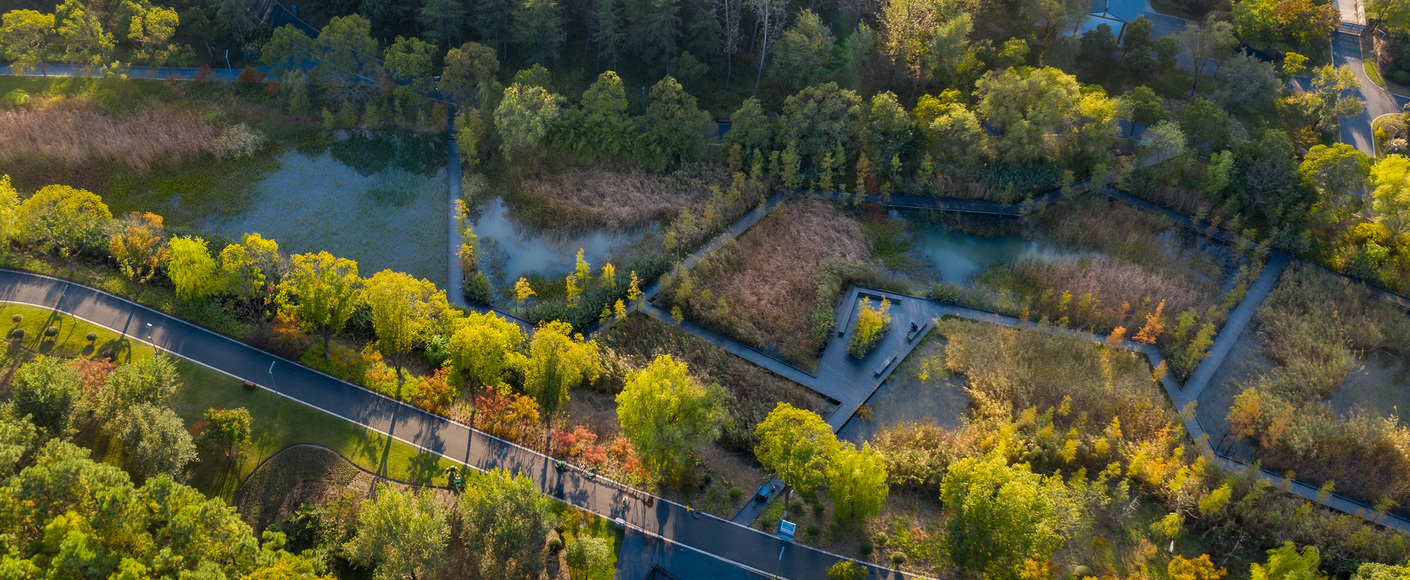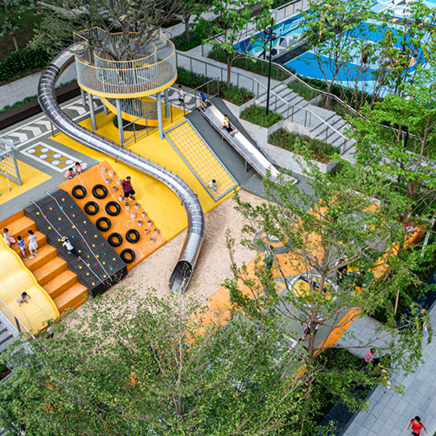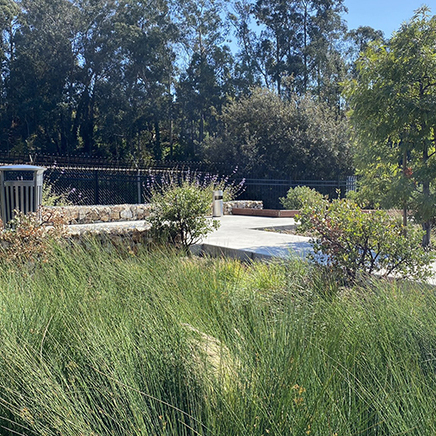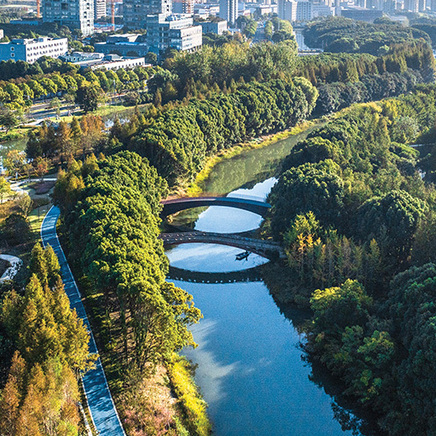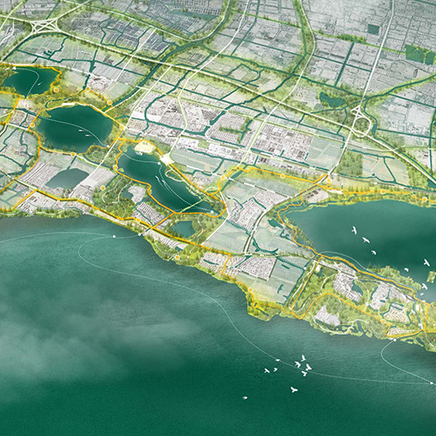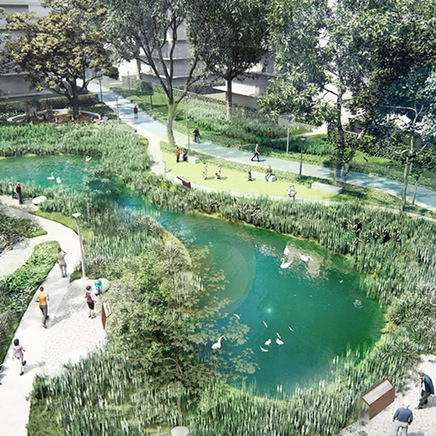CONTEXT
A growing suburb of Shanghai and Suzhou, Kunshan finds itself in a formative period of expansion that requires intentional inclusion of green infrastructure design alongside its developmental growth. As a result of its proximity to major urban centers, Kunshan West is a flourishing tech region that is growing into a new innovative core district of its own, attracting an influx of industry workers and residents alike. This development core is supported by a series of large water and open space resources, anchored by the expansive wetlands of Forest Park.
The district park is located within the Miaojing River watershed, a historical and preserveddrinking water aqueduct resource between Kuilei Lake and Kunshan’s Old Town.
EXISTING CONDITION
Previously underutilized as a recreational open space for residents of the district, Forest Park’s site challenges included an inaccessible overgrown and densely vegetated interior within an interface dominated by private developments with very few neighborhood entry points. The western edge of the site acts as a barrier between the neighboring communities and the amenities of Forest Park. The large existing network of waterways on site however presented an opportunity to utilize and improve upon the water filtration services the park was already providing the surrounding district. Strategic design was required to transform Forest Park into a district park that is equally valued as a recreational resource as it is an ecological one for Kunshan West.
DESIGN INTENT
The park’s design aims to realize a fully connected Forest Park with improved accessibility for surrounding neighborhoods, a community culture significant to the identity of the district and a functional ecological service for the park’s urban context. The overall goal is to connect and improve this underutilized landscape infrastructure resource for the growing residential neighborhoods of the district. Strategies to achieve these goals address accessibility, ecological value, and recreational amenities. Accessibility is achieved by creating a West Entry and establishing the West Loop for connected pedestrian and cycle circulation. Ecological value is improved by linking waterways with the rest of Forest Park and integrating the park’s water infrastructure into the surrounding urban context. A variety of both vibrant and passive recreational amenities are provided for adjacent communities, making Forest Park a regional destination as well.
ACCESSIBILITY
The design framework addresses accessibility by providing a new entry point on the western border, breaking an existing barrier into Forest Park. The West Entry acts as a vital gateway node that leads visitors into a recreational plaza fitted with amenities for social and healthy outdoor gatherings. This active node welcomes visitors into the park and links them into the network of trails and boardwalks within the interior of Forest Park, extending the natural character of the park into the urban public realm. Here an amphitheater, visitor center and dining take advantage of grand views over the West Pond, invigorated by aquatic planting and screens of trees to minimize views of skyline development.
Internal pathways lead visitors to explore different peaceful and natural habitats ranging from wetlands to forests as they journey through Forest Park’s now accessible interior. Timber boardwalks meander through aquatic planting and beds of reeds while hard paved footways adventure into tracts of colorful deciduous trees. These routes stemming from the West Entry Plaza connect into the bike system of Kuilei Lake and work to form an active and community-oriented waterfront park.
ECOLOGY
The green infrastructure strategy of Forest Park aims at improving the overall water quality of the whole district by effectively utilizing its vast network of filtrating wetlands. With the aid of both a water pump system and extensive aquatic reed planting, Forest Park filters storm-water runoff from neighboring urban development and recycles clean water downstream back into the southern edge of the district. Bioswales and ornamental wetlands support the park’s mechanical infrastructure to mitigate the pressure put on urban storm sewers, creating a healthy hydrological district.
The variety of flora and fauna species incorporated into the planting palette foster a strong level of biodiversity within the park for people to observe and learn about. This planting palette presents an array of seasonal color, evident in the rich layers of shrubs and trees that screen outside development. The wide range of planting on all levels envelope visitors senses, immersing them in a natural and peaceful setting.
CULTURE
The West Entry and recreational plaza extends the identity of the district of Kunshan West into Forest Park by providing space for community gatherings and active amenities like exercise and dining. This area is energized at night as residents of Kunshan West gather here to jog, practice Tai Chi and meet for family social functions in the cool summer evening temperatures. During the day, a cafe and visitor’s center both provide valuable programs for residents to enjoy as they venture out to explore the scenic and natural park on their doorsteps.
This programmatic strategy extends the gateway identity of the West Entry through to the Lotus Walk of wetland boardwalks. This trail allows visitors to come in direct contact with nature on a more passive route to leisurely stroll through swathes of wetland planting and provides restful areas to sit together, engaged in the natural beauty of the park.
IMPACT
The impact of the design of Forest Park’s West Entry is evident in the bustling activity observed day to day within its now open western border, where visitors are seen fishing on boardwalks, strolling through lush planting and having an afternoon snack by the West Pond. By becoming fully connected, Forest Park has become the landscape infrastructure that Kunshan West needs to serve the growing population and development the district is presently experiencing. The park now fulfills the needs of the community through efficient accessibility, abundant ecology and dynamic recreational amenities, supporting the flourishing future of Kunshan West.


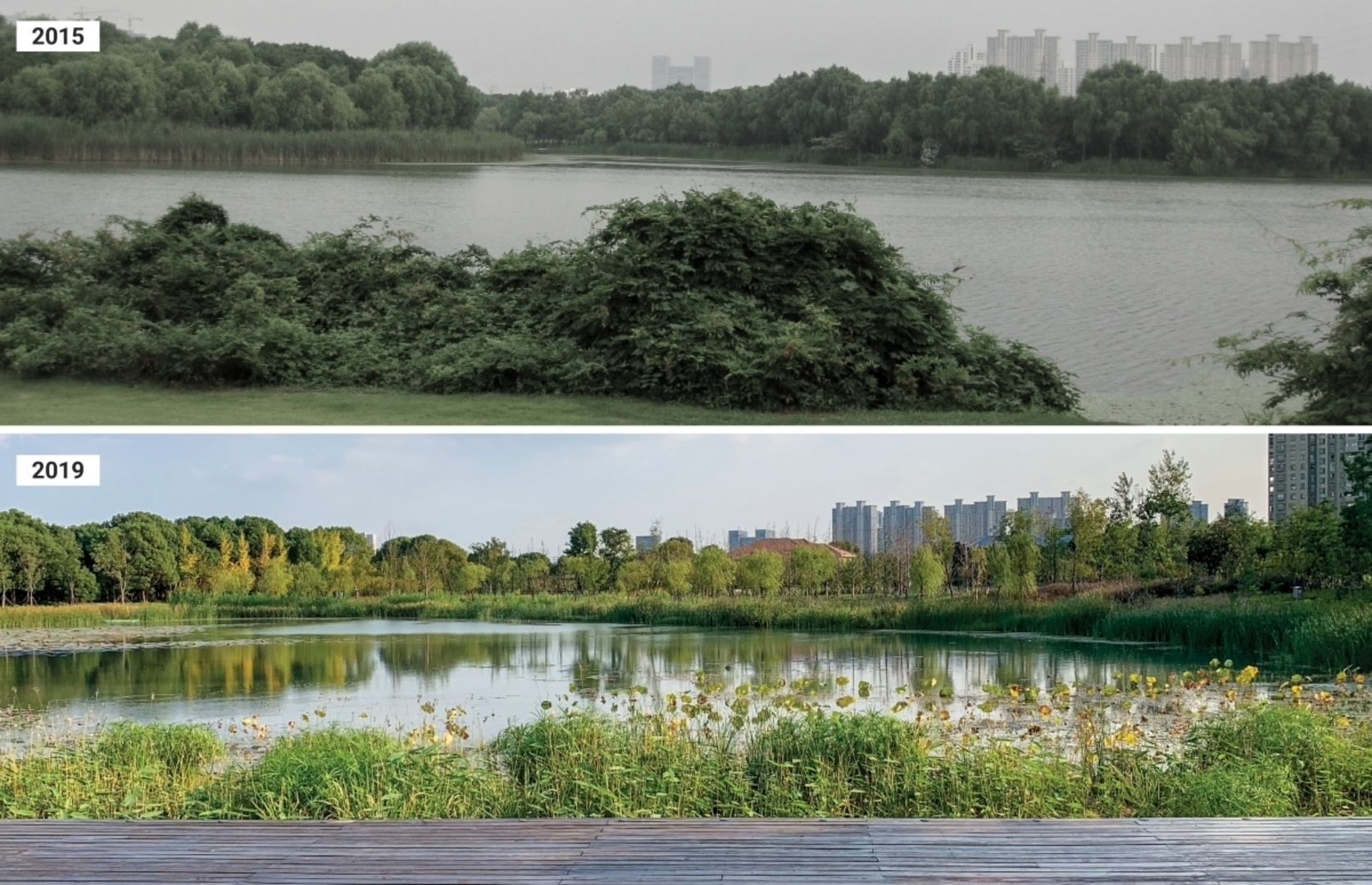
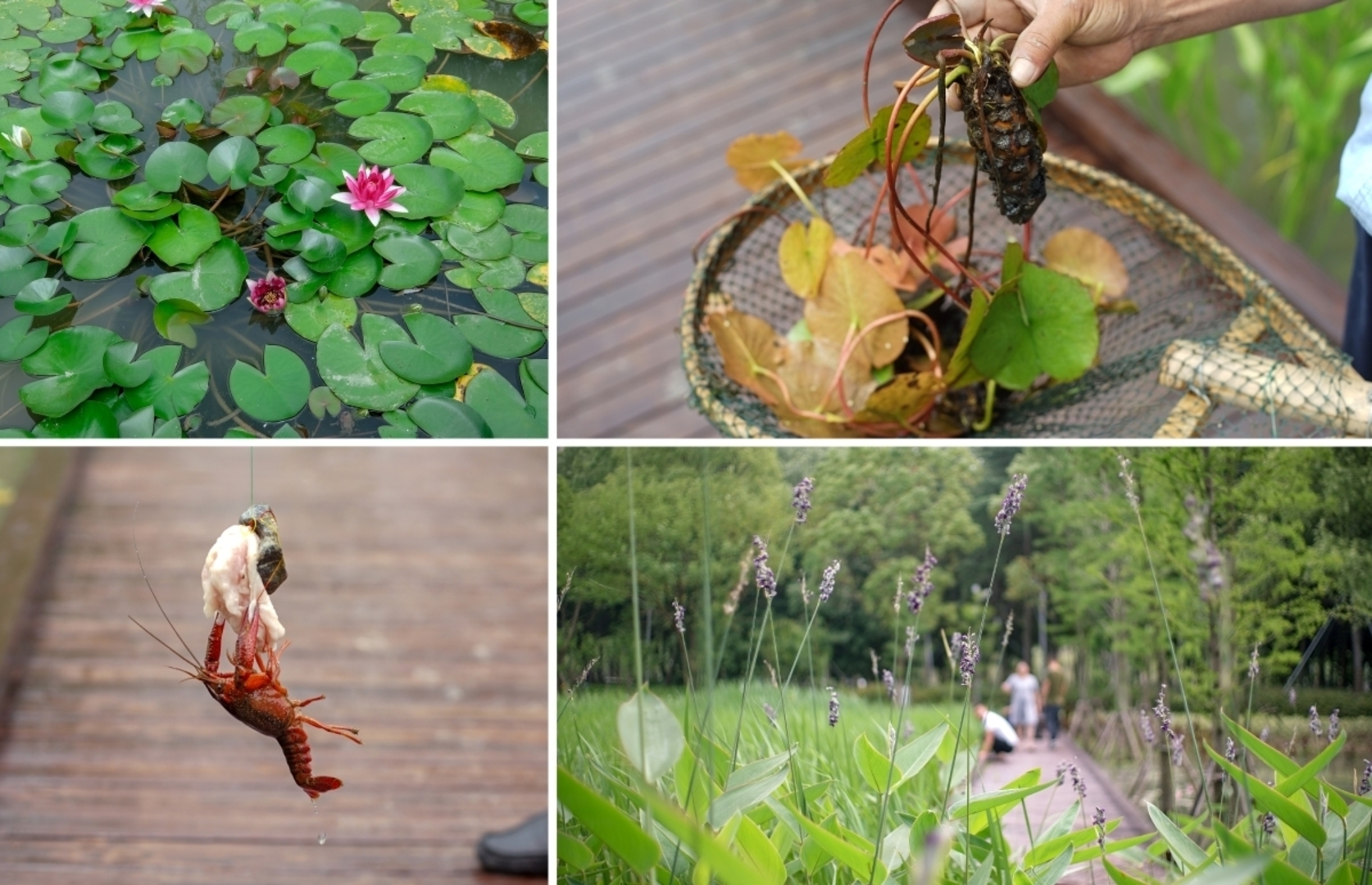






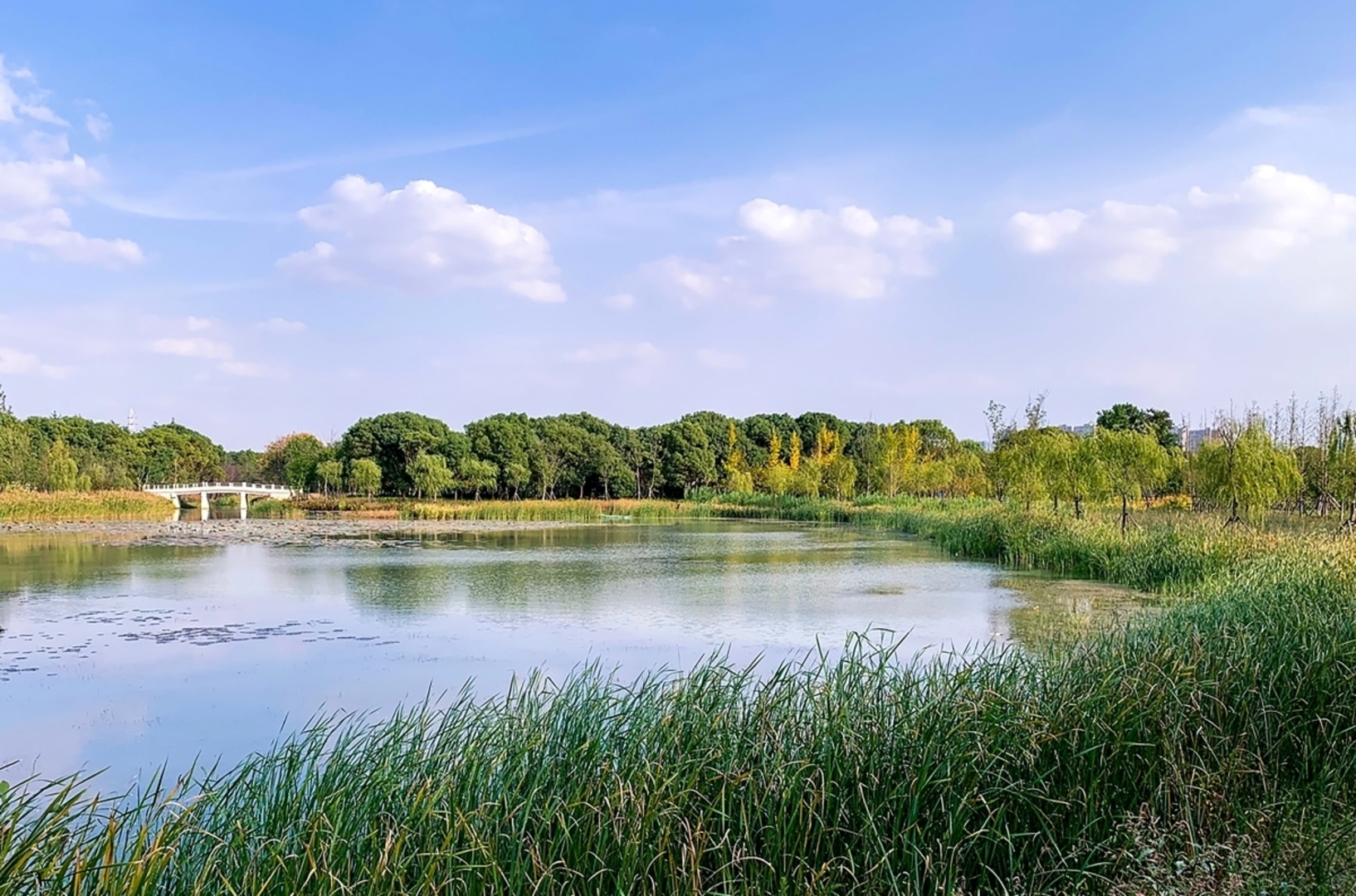

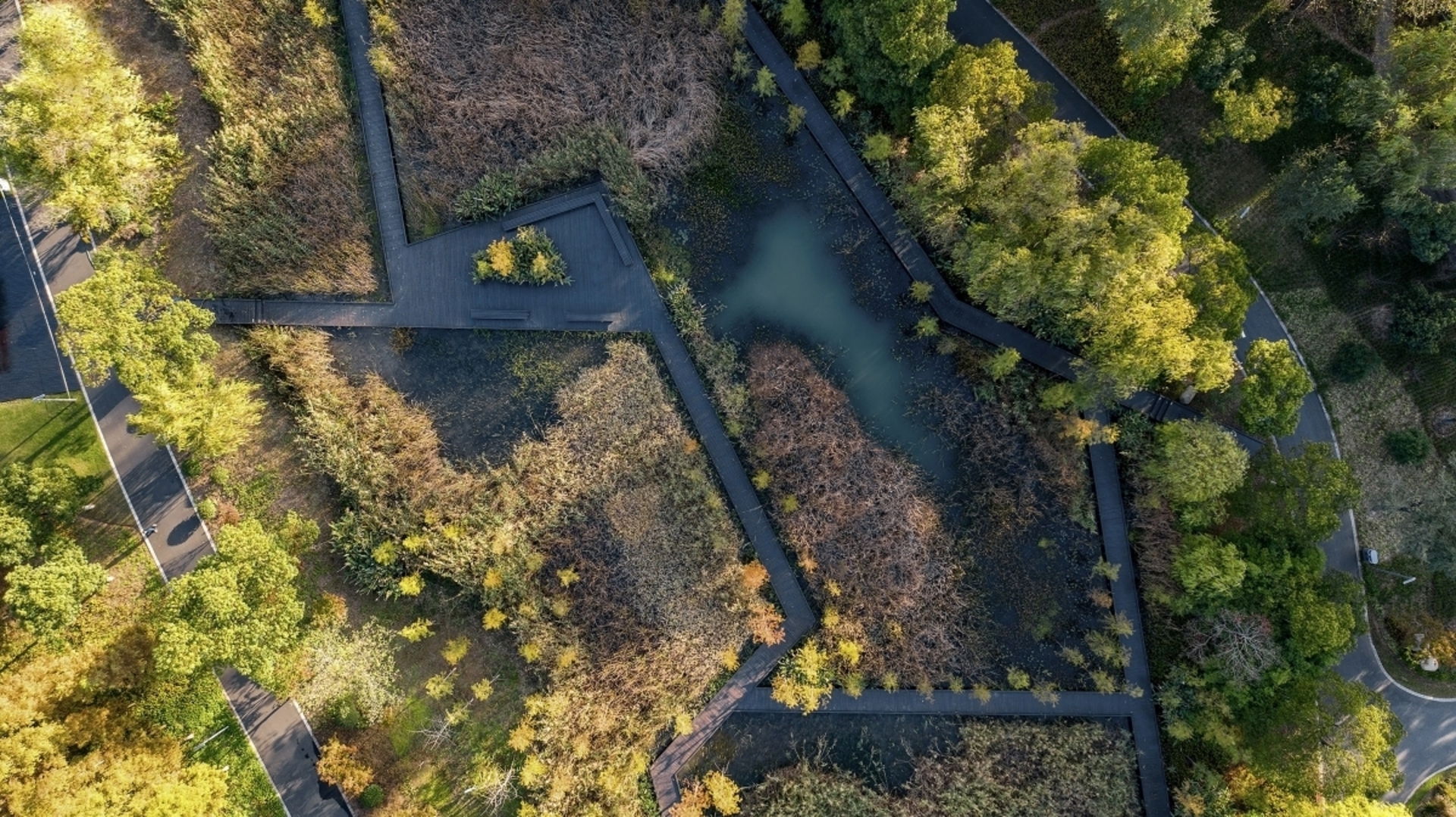
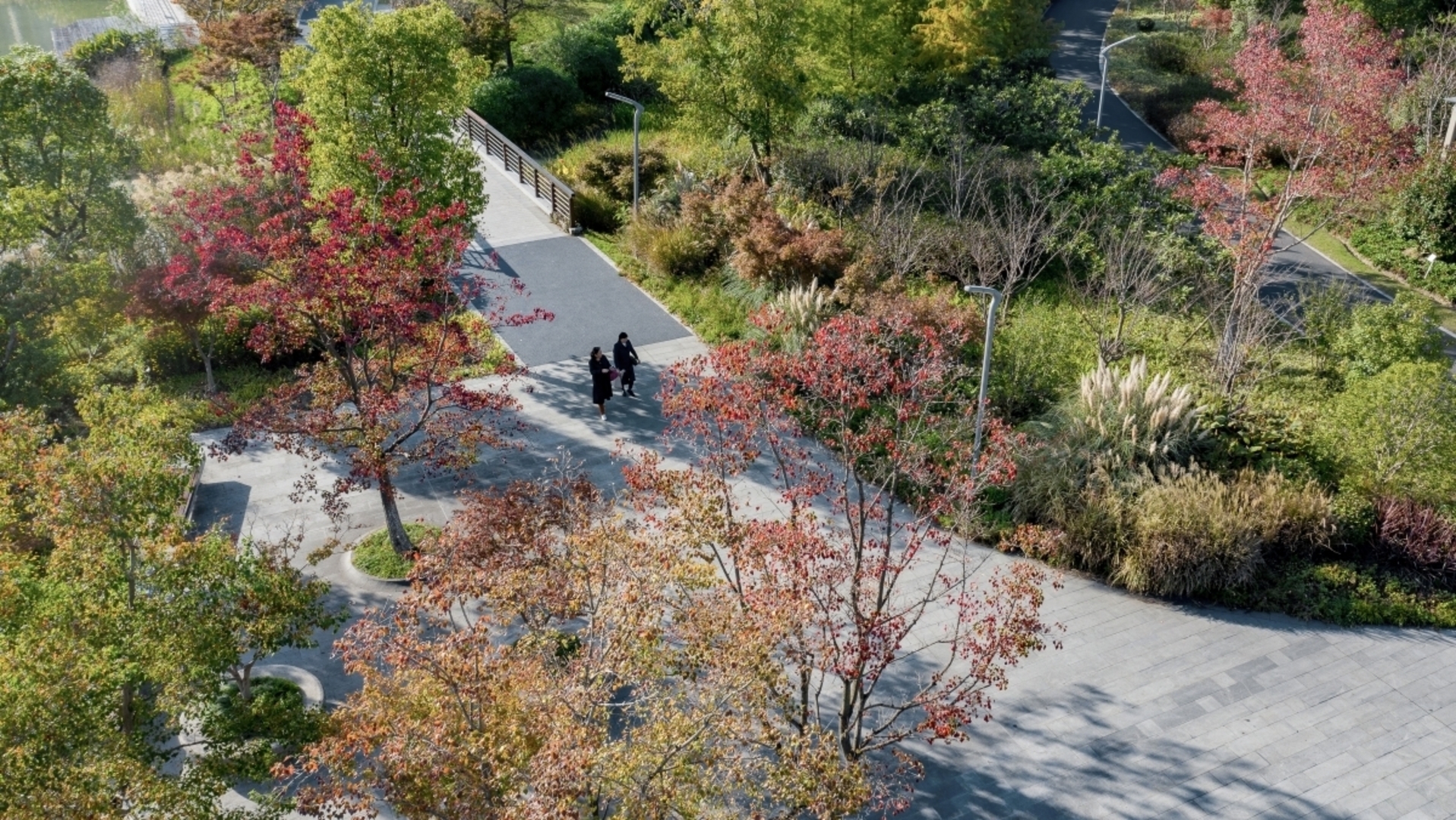


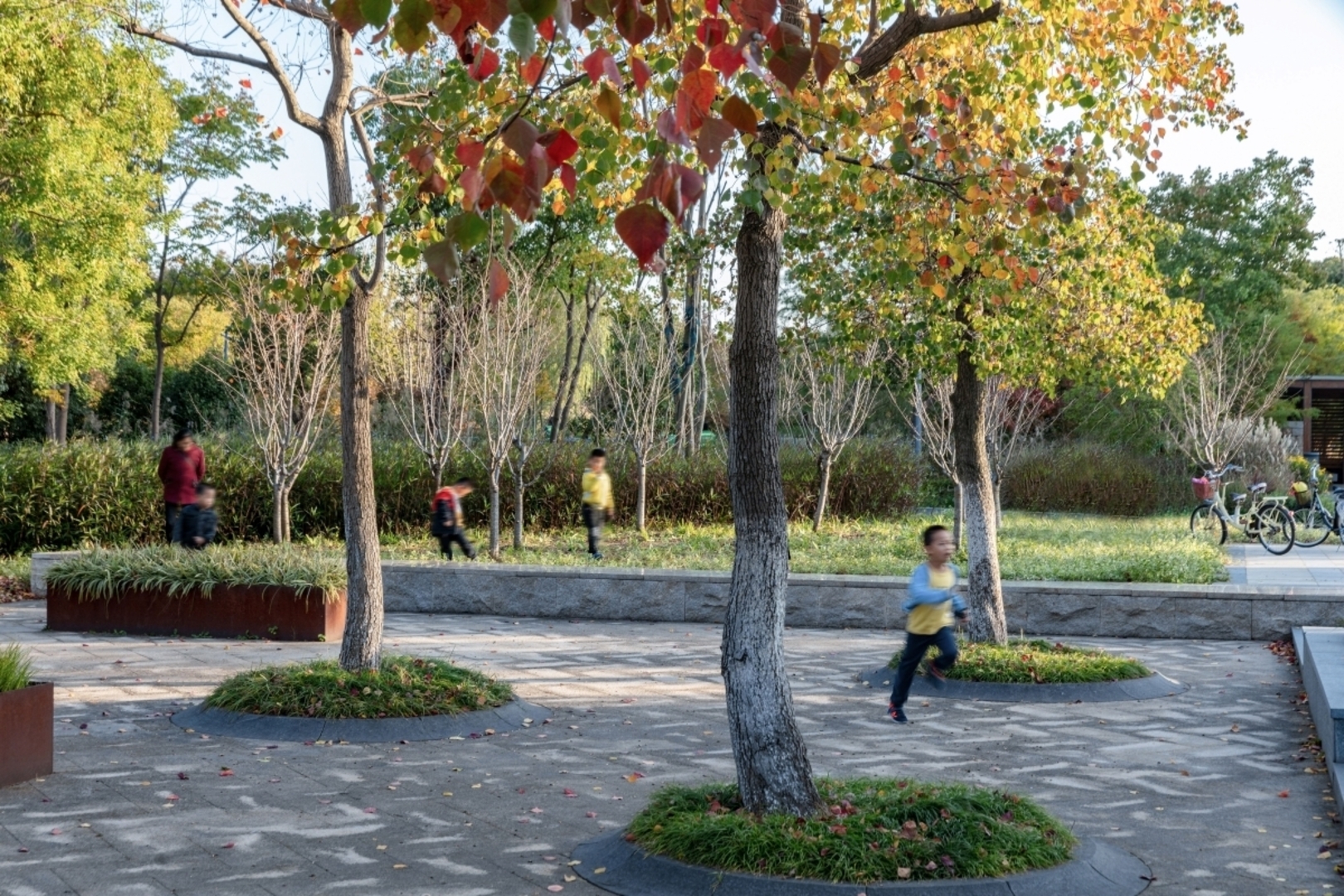
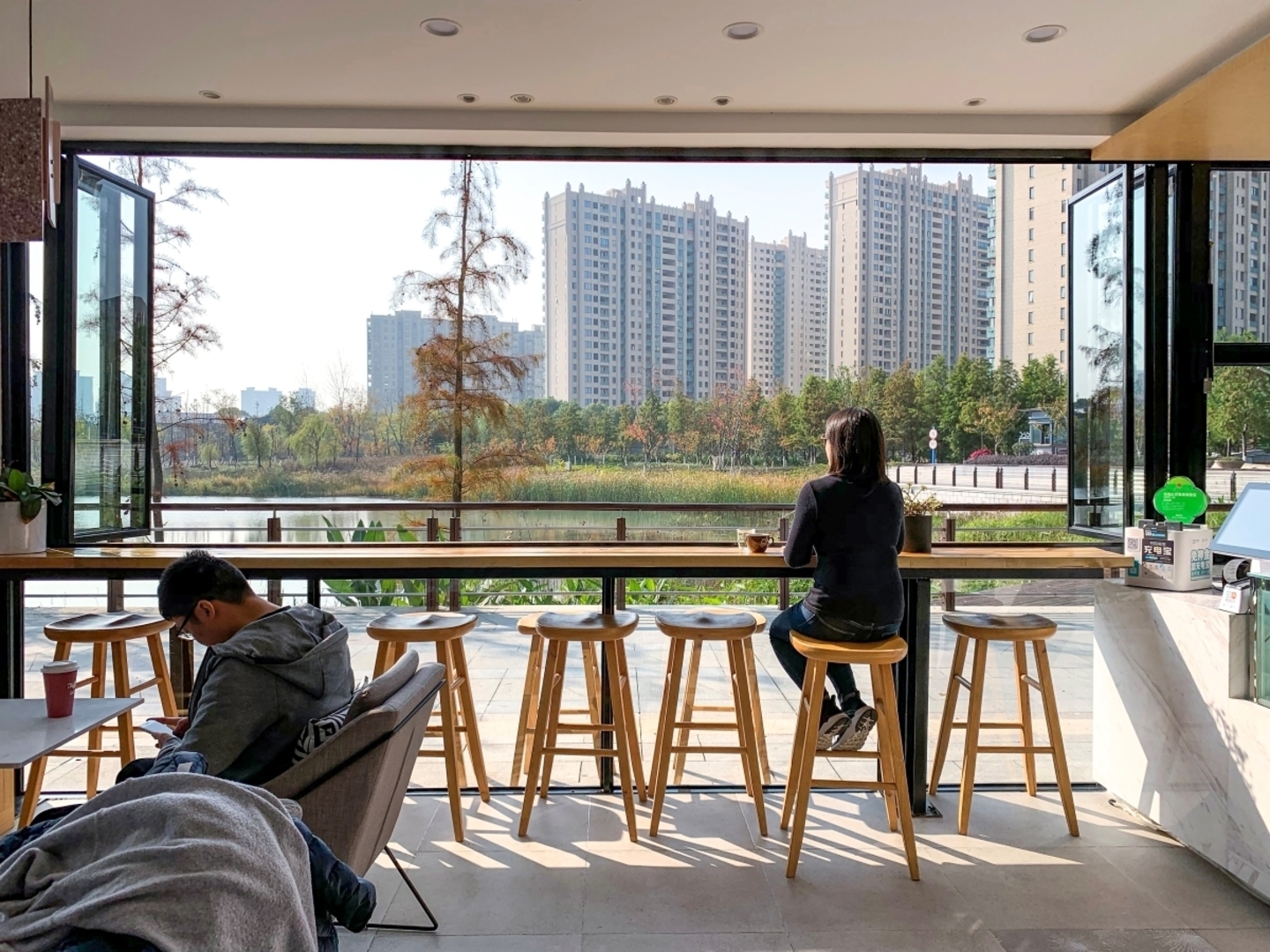
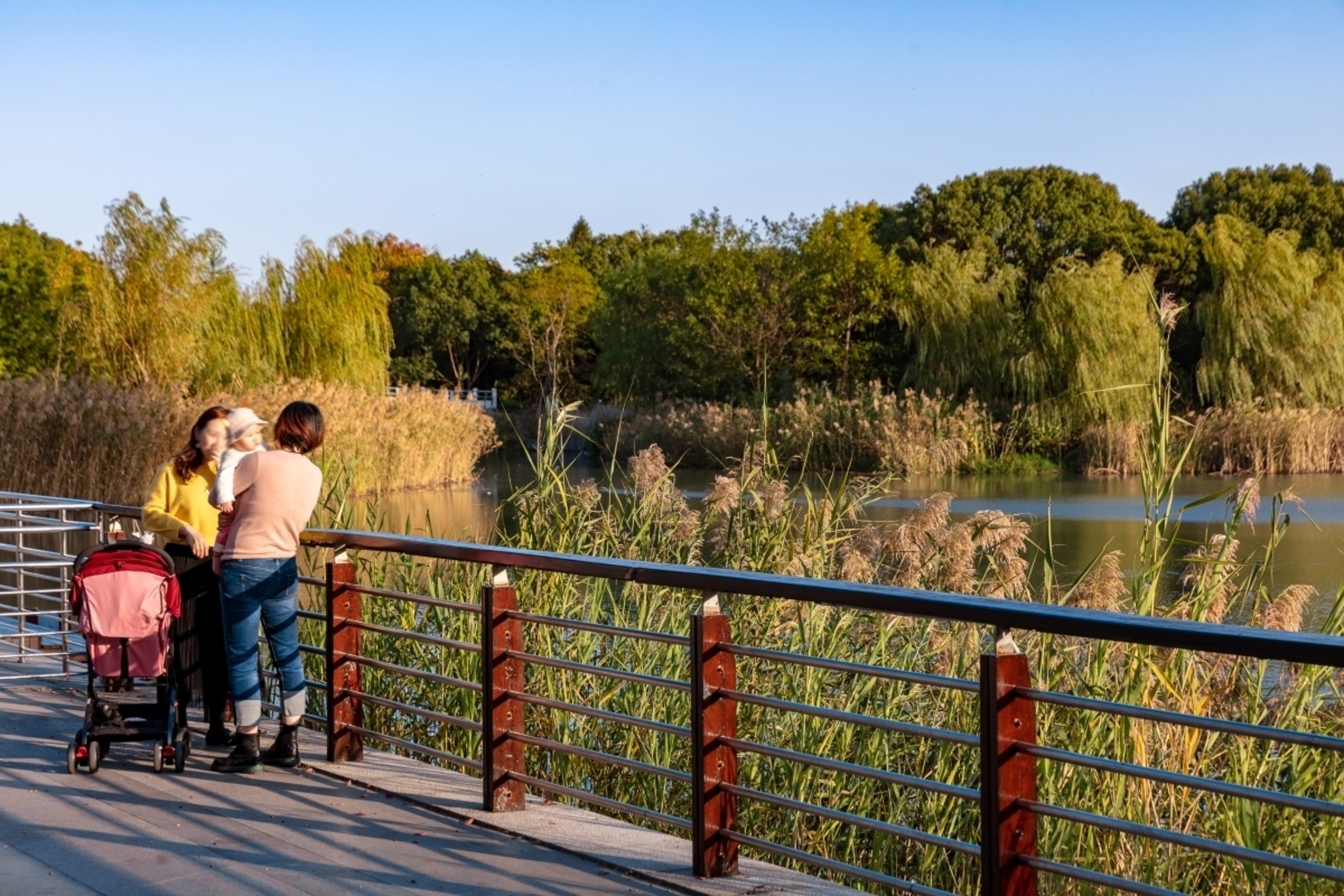
Use:Civic / Parks
Client/Organizaton:Kunshan City Construction Investment & Development Group Co. Ltd
Designer:PLAT Studio
Design Year:2014
Construction Year:2016-2018
Awards:2019 The American Society of Landscape Architects - the Northern California Chapter (ASLA-NCC), Honor Award for Design: Parks, Recreation, Trails and Open Space
Photo Credit:ZHIYI ,PLAT
Water Management:E2 Design Lab
